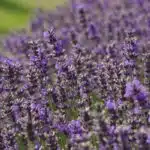Growing plants can be a therapeutic and rewarding activity, especially when it comes to outdoor gardening. Not only does it add aesthetic value to your surroundings, but it also provides fresh produce and contributes to a healthier ecosystem. However, for those who are new to gardening or have limited time and resources, choosing the right plants can be a daunting task. In this article, we will introduce 20 easy-to-grow plants that are low-maintenance and suitable for outdoor growing.
These plants have been chosen for their adaptability to various climates and soil types, as well as their ability to withstand pests and disease. Whether you have a small balcony or a large backyard, these plants will thrive with minimal effort on your part. From herbs like basil and mint that add flavor to your dishes, to colorful blooms like marigolds and zinnias that brighten up your garden, there is something for everyone in this list. So if you want to enjoy the benefits of gardening without the stress of high-maintenance plants, read on for our top picks of easy outdoor plants to grow.
Aloe Vera
Aloe Vera is one of the most beloved plants for both indoor and outdoor gardening. This succulent plant is particularly popular because of its numerous benefits for skin and hair. Aloe Vera contains a variety of vitamins, minerals, and antioxidants that make it an excellent natural remedy for many skincare problems such as burns, acne, and dryness. Moreover, Aloe Vera gel can help to promote hair growth and reduce dandruff.
To make Aloe Vera gel at home, start by selecting a mature and healthy plant. Cut off a few leaves from the bottom of the plant close to the stem with a sharp knife or scissors. Then use your knife to remove the spiky edges from each leaf before slicing them open lengthwise. Use a spoon to scoop out the clear gel-like substance inside each leaf before blending it in a mixer until smooth. Pour the blended mixture into a clean jar and store it in your refrigerator for future use.
If you are looking for an easy-to-grow outdoor plant that adds flavor to your dishes, then basil is an excellent choice! Basil is one of those herbs that are simple to grow in pots or garden beds, making it ideal for beginner gardeners.
Basil
Basil is an easy-to-grow plant that thrives in warm weather and plenty of sunlight. Its fragrant leaves make it a popular choice for outdoor gardens, and its many uses in cooking make it a valuable addition to any kitchen herb collection. Basil plants are also known for their ability to repel insects, making them a great natural pest control option.
Uses and Benefits of Basil in Cooking Basil is a versatile herb that can be used in a variety of dishes, from Italian pasta sauces to Thai curries. Its sweet and slightly peppery flavor pairs well with tomatoes, garlic, and olive oil. Fresh basil leaves are often chopped or torn into salads, sandwiches, and pizzas for added flavor. In addition to its culinary uses, basil has also been shown to have health benefits such as reducing inflammation and fighting bacteria.
How to Propagate Basil Plants Propagating basil plants is relatively easy and can be done by rooting stem cuttings or by starting seeds indoors. Stem cuttings should be taken from healthy plants during the growing season and placed in a container with moist potting soil. After several weeks, roots should begin to form and the new plant can be transplanted into a larger pot or directly into the garden. Starting basil from seed requires sowing seeds indoors about 6-8 weeks before the last frost date in your area. Once the seedlings have grown several sets of true leaves, they can be transplanted outside.
- When using fresh basil in cooking, add it towards the end of cooking so that its delicate flavor doesn’t get lost.
- For best results when propagating basil from cuttings, use a rooting hormone powder to encourage root growth.
- Basil prefers well-draining soil that is kept consistently moist but not waterlogged.
- To prevent basil from bolting (producing flowers), pinch off the flower buds as soon as they appear.
With its many culinary uses and ease of cultivation, basil is a great choice for any outdoor garden. Its fragrant leaves and natural pest-repelling abilities make it both beautiful and functional. By following a few simple steps, anyone can enjoy the benefits of fresh basil in their cooking and gardening endeavors. Moving on to the next section, let’s explore the beauty and simplicity of growing black-eyed susans.
Black-Eyed Susan
Black-Eyed Susan is a popular perennial plant that belongs to the sunflower family. It is native to North America and is widely grown for its bright yellow flowers with dark centers that bloom from early summer to late fall. According to the National Garden Bureau, Black-Eyed Susan is among the top ten most popular plants in American gardens.
Growing tips for Black-Eyed Susan are relatively easy, making it an excellent choice for beginner gardeners. The plant prefers full sun exposure but can tolerate partial shade. It thrives in well-draining soil and requires moderate watering. To promote a bushier and fuller growth, deadhead faded blooms regularly.
Apart from its aesthetic appeal, Black-Eyed Susan has many benefits in a garden setting. Its nectar-rich flowers attract bees, butterflies, and other pollinators, making it an ideal addition to any pollinator garden. Additionally, it is deer-resistant and drought-tolerant, making it a low-maintenance option for those who want a beautiful garden without too much effort.
| Benefits of Growing Black-Eyed Susan | | — | — | | Attracts pollinators | | Deer-resistant | | Drought-tolerant |
Next up: Catnip – another easy-to-grow outdoor plant that has many uses beyond just being loved by cats!
Catnip
Catnip is a member of the mint family and is known for its attractive white or lavender flowers. It’s easy to grow outdoors, making it a popular choice among novice and experienced gardeners alike. The plant can reach up to three feet in height and prefers well-draining soil and full sun exposure.
The benefits of growing catnip in your garden are numerous. Not only is it an excellent mosquito repellent, but it also attracts beneficial insects such as bees and butterflies. Additionally, catnip has a soothing effect on cats, making it an ideal addition to your feline-friendly garden.
How to use catnip: Tips and tricks are essential when growing this herb. Harvest the leaves and flowers before they begin to wilt, as this will result in the best flavor. Catnip can be used fresh or dried in teas, tinctures, or as an ingredient in baked goods. To dry catnip, hang the stems upside down in a cool, dark place until fully dried. Once dried, strip the leaves from the stems and store them in an airtight container.
As you can see, catnip is a versatile herb that provides many benefits for both you and your garden. Next up on our list of easy plants to grow outdoors are chives – another herb that is sure to add flavor and color to any dish!
Chives
As the saying goes, “good things come in small packages,” and chives are no exception. These petite herbs pack a flavorful punch and are incredibly easy to grow outdoors, making them a must-have for any home garden. Growing chives in containers is a convenient way to have fresh herbs on hand year-round.
To begin growing chives, select a container that has drainage holes and is at least six inches deep. Fill the container with well-draining soil and plant chive seeds or seedlings about one inch apart. Chives prefer full sun but can tolerate partial shade. Water regularly to keep the soil moist but not waterlogged.
Culinary uses of chives are vast, ranging from garnishing soups and salads to adding flavor to dips and spreads. The mild onion-like taste of chives pairs well with many dishes, making it an excellent herb for both novice and experienced chefs alike. So why not try your hand at growing chives in containers? With minimal effort, you can enjoy fresh herbs all year long.
Moving onto the next easy outdoor plant, daffodils are a classic springtime flower that adds color and charm to any garden. These hardy bulbs come in various shades of yellow, orange, and white and require little maintenance once planted. So let’s dive into how to grow daffodils and add some cheerfulness to your outdoor space!
Daffodils
- Daffodils are an ideal choice for gardeners looking for an easy to grow, low maintenance outdoor plant.
- When planting, it is best to choose a sunny, well-drained location and ensure that the soil is slightly acidic and rich in organic matter.
- Daffodils require minimal care, with regular watering and occasional fertilizing to promote blooming.
- There are numerous varieties of daffodils, including trumpet, double, jonquil and poeticus, each with its own unique blooming characteristics.
- To ensure that daffodils continue to thrive in a garden, it is important to deadhead spent blooms and avoid overcrowding.
- By selecting an appropriate variety and providing basic care, gardeners can enjoy the beauty of daffodils for years to come.
Planting
Planting daffodils outdoors is a great way to add color and beauty to your garden without too much effort. These bulbs are easy to grow and require minimal maintenance, making them an ideal choice for novice gardeners. The benefits of outdoor planting are numerous, from the fresh air and exercise to the satisfaction of seeing your efforts come to life in the form of blooming flowers.
The best time to plant daffodils outdoors is in the fall, ideally between September and November. This allows sufficient time for the bulbs to establish roots before winter sets in, which helps them survive through harsh weather conditions. It’s important to choose a well-draining soil that’s rich in organic matter, as daffodils prefer moist but not water-logged environments. When planting, dig a hole about 6 inches deep and place the bulb with its pointed end facing upwards.
In conclusion, planting daffodils outdoors is an easy and rewarding activity that can be enjoyed by anyone. These cheerful flowers bring joy and happiness to any garden or landscape, while also providing environmental benefits such as attracting pollinators like bees and butterflies. By following simple steps such as choosing the right time of year and soil type, you too can enjoy the beauty of daffodils in your outdoor space.
Care
Now that you have planted your daffodil bulbs outdoors, it’s important to care for them properly. Good plant care ensures that your daffodils will thrive and produce beautiful blooms year after year. Here are some tips for successful outdoor plant care:
First, be sure to water your daffodils regularly during their growing season, which is typically from early spring to late summer. However, avoid overwatering as this can lead to root rot and other diseases. You should also fertilize your plants once or twice a year with a balanced fertilizer that’s specifically formulated for bulb plants.
Secondly, it’s important to keep an eye out for common mistakes when caring for outdoor plants. One of the most common mistakes is planting too deeply or too shallowly. Daffodils should be planted at a depth of about 6 inches, with the pointed end facing upwards. Another mistake is not deadheading the spent flowers, which can lead to decreased blooming in subsequent years.
In addition to watering and fertilizing, you should also mulch around your daffodils to help retain soil moisture and suppress weeds. Be sure to remove any debris or dead leaves from around the plants as well. By following these simple tips and avoiding common mistakes, you can ensure that your daffodils will thrive and provide beauty and joy in your garden for years to come.
Varieties
Daffodils, also known as Narcissus, are one of the easiest plants to grow in a garden. These low-maintenance plants come in a wide variety of colors and shapes, making them a popular choice for gardeners everywhere. There are over 13,000 registered cultivars of daffodils, each with its unique features and benefits.
One of the benefits of growing easy plants like daffodils is that they require minimal care and attention once planted. Daffodil bulbs can be left in the ground for several years without needing to be dug up or divided. This makes them an ideal plant for busy gardeners who want to add color and beauty to their gardens without spending too much time on maintenance.
When choosing daffodil varieties for your garden, it’s important to consider factors such as bloom time, height, and color. Some popular early-blooming varieties include ‘February Gold’ and ‘Tête-à-Tête,’ while mid-season varieties include ‘Ice Follies’ and ‘Mount Hood.’ Late-blooming varieties include ‘Thalia’ and ‘Salome.’ It’s also important to choose varieties that are well-suited for your region’s climate and soil conditions.
To maintain healthy daffodil plants, it’s important to follow some basic tips. As mentioned earlier, watering should be done regularly but not excessively. Deadheading spent flowers will encourage more blooms in subsequent years. Finally, avoid mowing or cutting the foliage until it has yellowed completely – this allows the bulb to store energy for next year’s growth. By following these tips and selecting appropriate daffodil varieties for your garden, you can enjoy beautiful blooms with minimal effort for many years to come.
Daylilies
Daylilies are one of the most popular plants for landscaping due to their ease of care and beauty. They are hardy perennials and can thrive in almost any climate, making them an ideal choice for garden enthusiasts who are looking for a low-maintenance plant that can add color to their landscape. Daylilies offer several benefits when used in landscaping, including erosion control, weed suppression, and attracting pollinators.
Caring for daylilies is relatively easy. They require well-draining soil and full sun exposure to grow properly. In warmer climates, it’s important to water them regularly but not overwater them as they don’t like sitting in wet soil. In colder regions, daylilies will go dormant during the winter months and will require little maintenance until the spring season when new growth emerges. Deadheading spent blooms will encourage more flowers to bloom throughout the growing season.
Daylilies are versatile plants that can be used in a variety of settings such as borders, mass plantings or mixed with other perennials or shrubs. Their long blooming period makes them perfect for use in cottage gardens or naturalistic landscapes where they can intermingle with other wildflowers. With proper care, daylilies can provide years of enjoyment and beauty to any outdoor space.
Transition: Now that we have discussed how to care for daylilies in different climates and the benefits they provide in landscaping, let’s explore another easy-to-grow plant – lavender.
Lavender
Lavender, a member of the mint family, is a versatile plant that can be grown both indoors and outdoors. This herb is known for its fragrant aroma and has been used for centuries in various cultures around the world. The flowers are often dried and used in sachets or potpourri to add a pleasant scent to rooms. However, there are many other uses for lavender beyond just its aroma.
Uses for Lavender: From Aromatherapy to Culinary Delights
Lavender has long been associated with relaxation and stress relief, making it a popular choice for aromatherapy products such as candles, oils, and lotions. In addition to promoting relaxation, lavender is also believed to have anti-inflammatory properties that can help soothe sore muscles and joints.
In the kitchen, lavender can be used to add a unique flavor to dishes such as desserts, teas, and cocktails. It pairs well with honey, lemon, and berries and adds a subtle floral note that can elevate any dish. When cooking with lavender, it’s important to use only edible varieties of the plant that have not been treated with pesticides.
Growing Lavender: Tips and Tricks for a Successful Harvest
When growing lavender outdoors, it’s important to choose a sunny location with well-draining soil. Lavender prefers slightly alkaline soil with a pH between 6.5-7.5. Overwatering or planting in poorly drained soil can lead to root rot or other diseases, so it’s important to make sure the soil is dry before watering again.
To promote bushy growth and prevent leggy plants, prune your lavender regularly by cutting back about one-third of the plant each year in late summer or early fall. This will encourage new growth from the base of the plant and help maintain its shape.
With proper care and maintenance, growing lavender can be a rewarding experience that yields beautiful blooms all season long.
Transition:
Now that we’ve covered the basics of growing lavender, let’s move on to another outdoor plant that is just as easy to grow – marigolds.
Marigolds
Moving on from discussing lavender, we turn our attention to another easy-to-grow outdoor plant – marigolds. These beautiful flowers not only add a pop of color to any garden, but they also have a rich history in traditional medicine and can be used for natural dye-making.
For centuries, marigolds have been used in traditional medicine to treat various ailments such as headaches, toothaches, and even digestive issues. The flower’s anti-inflammatory properties make it an effective treatment for skin irritations and wounds. It is believed that the marigold’s healing properties come from its high levels of antioxidants and flavonoids.
Aside from their medicinal uses, marigolds can also be used to create natural dyes. The bright orange and yellow hues of the petals can be extracted by boiling them in water with a bit of vinegar or alum to create a vibrant dye for fabric or paper. This natural dyeing process is not only eco-friendly but also produces unique and beautiful results.
As you consider adding marigolds to your garden this season, keep in mind their various uses beyond just aesthetics. Whether you’re looking for a natural remedy or an eco-friendly DIY project, these versatile flowers are sure to impress. Next up, we’ll explore another easy-to-grow herb – mint – that has numerous culinary uses in addition to its practical benefits in the garden.
Mint
Mint is an easy-to-grow herb that is perfect for outdoor gardens. It belongs to the family Lamiaceae, which includes other popular herbs like basil, oregano, and rosemary. Mint has a refreshing scent and can be used in various ways, making it a versatile herb to have in your garden.
One of the most common uses of mint is in cooking. Its cool flavor makes it a great addition to drinks like mojitos or lemonade. Mint leaves can also be added to fruit salads, sauces, and marinades. Additionally, mint can be used as a garnish for desserts like ice cream or chocolate cake. With its versatility in the kitchen, mint is an excellent choice for those who enjoy experimenting with different flavors.
Apart from being delicious, consuming mint also has numerous health benefits. Mint contains menthol, which has been shown to have anti-inflammatory properties that may help reduce pain and swelling. Additionally, mint can aid digestion by relaxing stomach muscles and reducing bloating. Drinking mint tea has also been associated with improved respiratory health by helping to clear airways and relieve congestion.
Moving onto another easy-to-grow plant that adds a pop of color to any garden: pansies.
Pansies
When it comes to easy plants to grow outdoors, pansies top the list. These hardy little flowers are perfect for novice gardeners who want to add a pop of color to their outdoor space without too much effort. With their bright, cheerful blooms and delicate scent, pansies are sure to be a hit with anyone who loves spending time in the garden.
One of the great things about pansies is their versatility. Aside from being a beautiful addition to any garden, they also have several uses in cooking. Pansies can be used as a garnish for salads or desserts, and their vibrant colors make them an excellent choice for decorating cakes and cupcakes. They can also be candied or made into tea for a unique and flavorful treat.
If you’re considering adding pansies to your garden, it’s important to know how to care for them in the winter months. While these little flowers are resilient, they still need some TLC during the colder months. Be sure to mulch around the base of your pansies with leaves or straw to help protect them from frost. You should also water them sparingly during this time and avoid getting water on the leaves or blooms.
With their stunning colors and delicate beauty, it’s no wonder that pansies are such a popular choice for home gardeners. Whether you’re looking for an easy plant that requires minimal maintenance or you simply love the cheerful look that pansies bring to your outdoor space, these flowers are sure to impress. In the next section, we’ll explore another popular plant that has many uses both in the garden and beyond: peppermint.
Peppermint
Peppermint is a hardy and versatile herb that is easy to grow outdoors. It thrives in moist, well-drained soil and prefers partial shade. Peppermint can also be grown indoors, but it requires a lot of sunlight and good air circulation.
Peppermint has many uses and benefits, especially when its oil is extracted. Peppermint oil can be used as a natural remedy for headaches, muscle pain, and digestive issues. It can also be used as a natural insect repellent and to freshen up the air in your home. Growing peppermint at home allows you to have access to fresh leaves that you can use for tea or cooking, as well as produce your own peppermint oil.
When growing peppermint outdoors, it’s important to keep it contained as it can become invasive if left unchecked. Planting it in containers or using barriers around the plant can help prevent it from taking over other areas of your garden. Growing peppermint indoors requires more attention to detail, such as ensuring proper drainage and providing enough light. However, indoor plants are less susceptible to pests and diseases than outdoor plants.
Transition: As easy as growing peppermint may seem, there are other outdoor plants that are just as easy to grow and have numerous benefits. One such plant is the sunflower.
Sunflowers
Giant sunflowers are a favorite among garden enthusiasts, and for good reason. These towering plants are easy to grow and can reach heights of up to 15 feet or more. They make a great addition to any outdoor space and can add a touch of whimsy to your garden.
To start growing giant sunflowers, you’ll need to prepare the soil by loosening it and adding compost or fertilizer. Sunflowers prefer full sun, so choose a spot that receives at least six hours of direct sunlight each day. Sow the seeds directly into the soil in late spring or early summer, once all danger of frost has passed. Keep the soil moist but not waterlogged until the seedlings emerge.
Once your sunflowers have grown tall and strong, you’ll want to harvest their seeds. This is typically done in late summer or early fall, when the flower heads begin to droop and turn brown. Cut off the heads with pruning shears and hang them upside down in a warm, dry place until they’re completely dry. Then use your hands or a fork to remove the seeds from the head. Store them in an airtight container until you’re ready to plant them again next year.
Transition: Now that you know how to grow giant sunflowers and harvest their seeds, let’s move on to another popular outdoor plant – zinnias.
Zinnias
Growing and caring for zinnias is an excellent choice for beginners, as they are easy to grow and require minimal maintenance. Zinnias are annual flowers that come in a variety of colors, including red, orange, yellow, pink, and white. They bloom from mid-summer to fall and can grow up to three feet tall.
To grow zinnias outdoors, choose a sunny location with well-draining soil. Sow the seeds directly into the soil after the last frost has passed. Keep the soil moist until the seeds germinate, which usually takes 7-14 days. Once the plants have grown to be about 6 inches tall, thin them out to about 12 inches apart to prevent overcrowding.
Zinnias are popular flowers for floral arrangements due to their bright colors and long vase life. The best ways to use zinnias in floral arrangements is to cut them when they are fully open and place them in a vase with fresh water. You can also mix different colors of zinnias together for a vibrant bouquet or use them as fillers in larger arrangements. Overall, growing zinnias is an easy way to add color and beauty to your garden while providing stunning blooms for your floral displays.
Transitioning into the subsequent section about sage, another beginner-friendly plant that can easily thrive outdoors is sage.
Sage
Sage is a popular herb that has been used for centuries in cooking and medicine. The plant has a reputation for being easy to grow and can thrive in various outdoor environments, making it an excellent addition to any garden. Although there are many theories regarding the origins of sage, it is widely believed to have originated in the Mediterranean region.
Uses and benefits of sage in cooking are plentiful, with its unique flavor profile adding depth and complexity to dishes. Sage pairs well with poultry, pork, and sausage, making it a staple ingredient in many stuffing recipes. It is also commonly used as a seasoning for roasted vegetables, such as potatoes or carrots. Additionally, sage can be brewed into tea or added to cocktails for an extra layer of flavor.
Aside from its culinary uses, sage possesses medicinal properties that have been valued for centuries. The herb contains compounds that have anti-inflammatory effects and may help alleviate symptoms of certain conditions, such as sore throat or indigestion. Additionally, some studies suggest that sage may improve cognitive function and memory retention when taken in supplement form.
Incorporating sage into your garden is not only easy but also comes with numerous benefits. Whether you’re looking to add flavor to your meals or reap the medicinal properties of this versatile herb, growing sage outdoors is a smart choice. With proper care and maintenance, you can enjoy fresh sage year-round and take advantage of all it has to offer.
Conclusion
Gardening is an enjoyable and rewarding activity that can be done by anyone, regardless of their experience level. With the right plants, tools, and a little patience, anyone can create a beautiful outdoor space. This article highlights 20 easy-to-grow plants that are perfect for beginners or those looking for low-maintenance options.
According to a recent survey conducted by the National Gardening Association, over 90 million households in the United States engaged in some form of gardening activity in 2020. This indicates that there is a growing interest in gardening among Americans. The good news is that with these easy-to-grow plants, anyone can get started on their gardening journey.
From the medicinal Aloe Vera plant to the flavorful Chives and Basil herbs, these plants offer numerous benefits beyond their aesthetic appeal. Not only do they add beauty to your outdoor space, but they also attract beneficial insects such as bees and butterflies. Additionally, growing your own herbs and vegetables saves you money while providing fresh produce for your meals. With these simple tips and plants listed above, gardening can be an enjoyable hobby for everyone to enjoy.
Image Credits





























